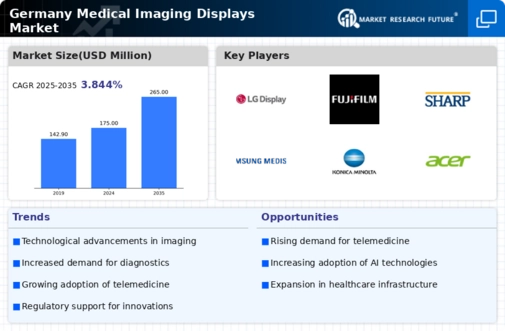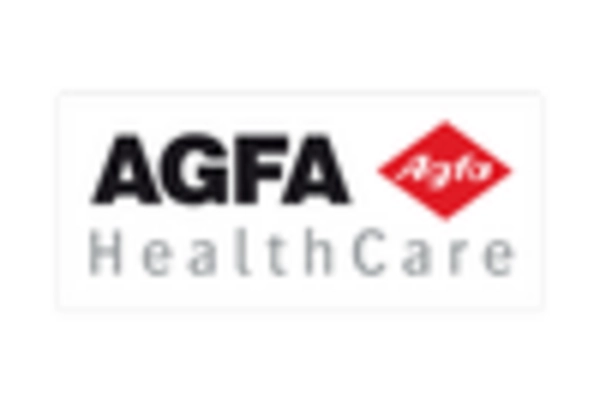Growing Aging Population
Germany's demographic shift towards an aging population significantly impacts the medical imaging-displays market. With an increasing number of elderly individuals, the demand for diagnostic imaging services is on the rise. The proportion of people aged 65 and older is projected to reach 25% by 2030, necessitating enhanced medical imaging capabilities. This demographic trend leads to a higher incidence of chronic diseases, which in turn requires advanced imaging technologies for accurate diagnosis and monitoring. Consequently, healthcare providers are compelled to invest in high-resolution imaging displays to cater to the needs of this growing patient demographic, thereby stimulating the medical imaging-displays market.
Focus on Patient-Centric Care
The shift towards patient-centric care in Germany is influencing the medical imaging-displays market. Healthcare providers are increasingly prioritizing patient experience and outcomes, which necessitates the use of advanced imaging technologies. High-quality displays are essential for effective communication of diagnostic information to patients, enhancing their understanding and engagement in their healthcare journey. This focus on patient-centric approaches is reflected in the growing investments in imaging technologies that facilitate better visualization and interpretation of medical data. As healthcare facilities strive to improve patient satisfaction and outcomes, the demand for sophisticated imaging displays is likely to rise, thereby propelling the medical imaging-displays market.
Rising Healthcare Expenditure
The medical imaging-displays market in Germany is experiencing growth due to the increasing healthcare expenditure. In recent years, the German government has allocated substantial budgets to enhance healthcare infrastructure, which includes investments in advanced imaging technologies. This trend is reflected in the healthcare spending, which reached approximately €400 billion in 2024, indicating a growth of around 5% from the previous year. As hospitals and clinics upgrade their imaging systems, the demand for high-quality displays rises, thereby driving the medical imaging-displays market. Furthermore, the emphasis on improving patient outcomes and diagnostic accuracy propels healthcare facilities to invest in state-of-the-art imaging displays, which are essential for effective diagnosis and treatment planning.
Advancements in Display Technology
Technological advancements in display technology are a key driver of the medical imaging-displays market in Germany. Innovations such as higher resolution displays, improved color accuracy, and enhanced contrast ratios are becoming increasingly important for medical imaging applications. These advancements enable healthcare professionals to make more accurate diagnoses and treatment decisions. The market for medical imaging displays is projected to grow at a CAGR of 6% through 2027, driven by the continuous evolution of display technologies. As healthcare providers seek to adopt the latest imaging solutions, the demand for cutting-edge display technologies is expected to rise, further stimulating the medical imaging-displays market.
Integration of Artificial Intelligence
The integration of artificial intelligence (AI) in medical imaging is transforming the landscape of the medical imaging-displays market in Germany. AI technologies enhance image analysis, improve diagnostic accuracy, and streamline workflows, making them increasingly attractive to healthcare providers. As hospitals adopt AI-driven imaging solutions, the need for high-quality displays that can accurately represent AI-enhanced images becomes critical. This trend is supported by a report indicating that the AI in healthcare market is expected to grow at a CAGR of 40% through 2026. The synergy between AI and imaging displays not only improves diagnostic capabilities but also drives the demand for advanced display technologies in the medical imaging-displays market.

















Leave a Comment